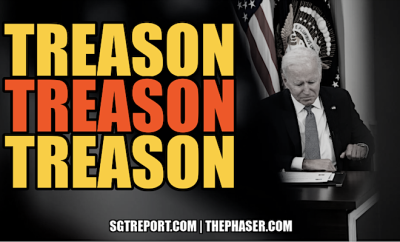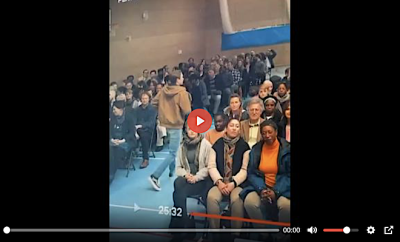 NEO.org
NEO.org
Politics
Shinzo Abe on American Tour
by , NEO.org:
Japanese Prime Minister, Shinzo Abe paid an official state visit to the United States, which lasted an unprecedented seven days (from April 26 through May 3 of this year) and became one of the key cogs in the correlation machine that takes the form of a strategic “US-China-Japan” triangle, as well as in the APAC and the world as a whole.
The outcome of his talks with US president Barak Obama was a “mutual vision”, in which the attitudes of leaders of both nations towards the entire range of bilateral relations, the development of a variety of processes in the APAC and the world as a whole were expressed.
Another important document adopted by the so-called “2+2 committee”, which includes ministers of foreign affairs and defense, was the “Guiding Principles in the Japanese-America
The penultimate edition of this document was accepted in 1997, that is, it no longer met real regional and world needs and was inconsistent with the now transformed alliance itself, in particular, the metamorphosis of roles to be played by both allies.
At a joint press conference, the leaders of both nations strongly emphasized that the process of strengthening the bilateral alliance has no anti-China motives. However, critics of Shinzo Abe’s visit to the United States had no doubt that both of these documents are aimed precisely at China, whose President, Xi Jinping was invisibly present at the table of US-Japanese negotiations.
It can be assumed that the leaders of the US and Japan in the course of the conversation occasionally peered thoughtfully at this empty place. Clearly, without considering the interests of any of the three major APAC powers today, it is pointless to discuss regional or even global issues.
There is no doubt as to the globalist nature of the United States and China’s positions in the world. As for Japan, an ongoing process of its gradual move to the group of the world’s not only economic but also political leaders is a direct result of the content of the “mutual vision”.
The chief difference between this document and all its predecessors is the clearly marked global claim of the US-Japan military-politic
However, as to the validity of these claims and even the longevity of these two unions, today it is difficult to make any predictions.
Everything will be determined by several processes. Firstly, the nature and extent of the return to big world politics staged by both of those defeated in World War II, ie Germany and Japan, as well as, secondly, the development of both of their relations with China.
Concerning Japan, an adequate analysis of its internal and external problems, on its way to its becoming one of the most prominent world players is given in the article “Prelude to the Japanese revival,” published by Stratfor in connection with the visit of Abe to the United States. Author John Minnich believes that this “Japanese song is far from over”, but Shinzo Abe may be its “prelude”.
Potentially fatal consequences for the NATO and the US-Japanese alliance may be carried in America’s obvious fatigue from fulfilling the extremely inglorious role of world sheriff while strengthening the establishment of the American’s political non-isolation position.
It is possible that in recent years, the tendency to downsize on US involvement in conflicts in various “hot spots” and attempts to hand off a significant part of the burden to allies, is one of the manifestations of a hidden struggle between various elite groups on the key issues of US foreign policy.
In Asia, Washington has with increasing persistence imposed the role of “deputy sheriff” on Japan. In regard to this, a remarkable headline appeared in China in one of the many articles, commenting on S. Abe’s visit to the United States: “World auxiliary police, new role for Japan to meddle in global affairs“.
But the fact of Japan evolving into an independent political player will bear the inevitable consequence of the appearance of its own interests and objectives, which will not always fully coincide with those of the US.
This was displayed, in particular, in Japan’s hesitation over joining the Asian Infrastructure Investment Bank patronized by China, whose establishment is opposed by the USA.
It is also worth noticing that at the final press conference, when Obama raised the issue of a “joint statement of the two countries against Russian aggression in Ukraine,” Abe limited himself to a remark “on the consideration of the situation in Ukraine”, among other topics of bilateral talks.
Both leaders made a special statement on the further reduction of accumulated world nuclear weapons. It seems, however, behind this statement each of the Allies envisioned their own goals.
The US has long had a tendency to gradually replace nuclear weapons with “conventional” high precision weapons that with the necessary speed can be delivered to targets marked beforehand. Possibly relocating the latter should be monitored in real time with the help of modern reconnaissance and communication systems.
Japan is positioning itself as a leader of the movement for the next activation of complete nuclear disarmament. This position contributes to the image of a peaceful country aspiring to reach global prosperity.
For Tokyo, this image is a very important international political reserve, which it undoubtedly uses during the inevitable discussion of various UN Security Council reform projects. Japan is among the lead contenders for future permanent members of the UN Security Council.
Apparently, despite China’s critical assessment of S. Abe’s visit to the United States, Beijing has not closed the door for dialogue with Japan, which resumed after a long break last November on the sidelines of the APEC summit and continued for a week before the visit to Jakarta on the sidelines of a summit of leaders of Asia and Africa on the 60th anniversary of the famous Bandung Conference.
After S. Abe’s trip to the United States, a delegation from the Japanese parliament visited China. It was welcomed by a third party in the hierarchy of the Communist Party of China, which was appreciated in the Japanese media as “another sign of thaw in frosty bilateral relations“.
The question remains, however, of the degree of freedom that Japan possesses in the process of establishing its relations with China, as well as the effectiveness of the US “emergency brake” which Washington can press if, in its opinion, this process goes “too far.”
It is important for the development of the situation in the “US-China-Japan” triangle what position Japan takes on the formation of a Trans-Pacific Partnership and what its current assessment of its own history during World War II is.
Both of these questions were foundational in the talks between Abe and Obama. However, they do, as does the new American-Japanes












